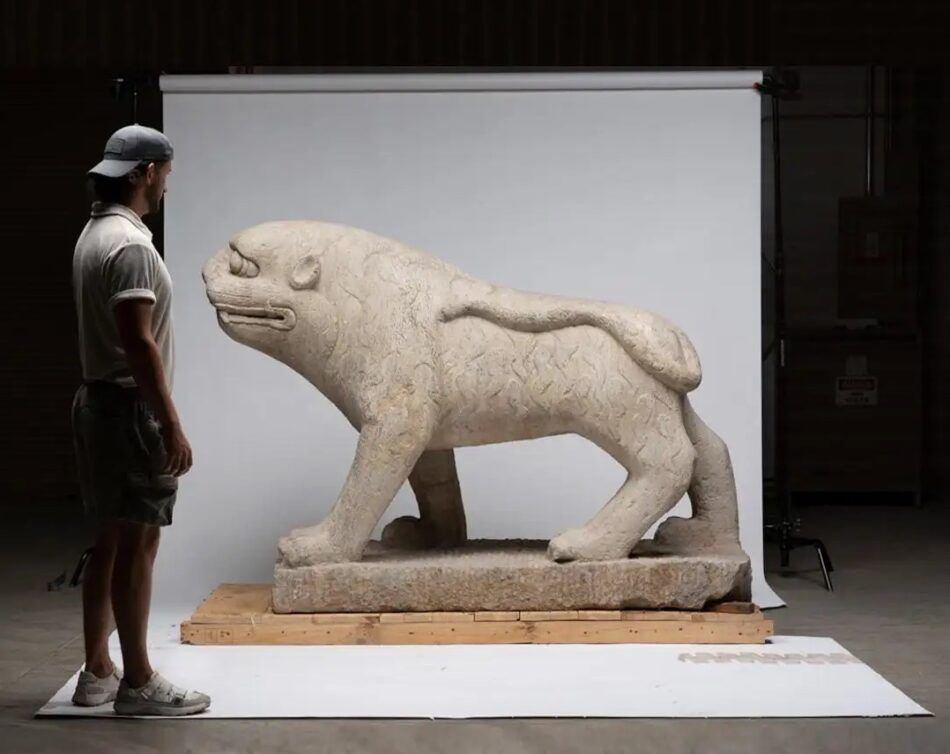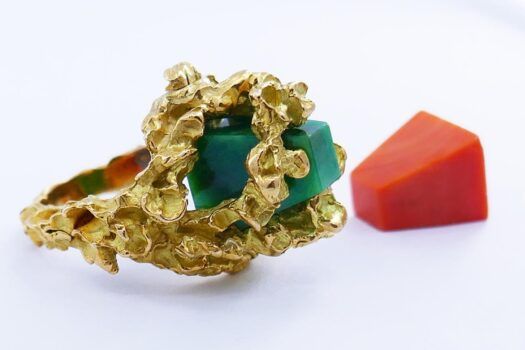
Instead of installing a home security system, try this pair of Chinese tigers, simultaneously theatrical and threatening. These charming creatures, which likely guarded a tomb during the Qing dynasty, are carved from solid limestone, stand more than five feet tall and weigh more than 7,000 pounds. They would make a perfect adornment for an entrance or garden, welcoming guests while keeping evil spirits at bay.
“They are the unexpected grand gestures that make a space truly memorable,” says Betsy Nathan, founder of the Chicago gallery Pagoda Red, which specializes in Asian artworks and is offering the twin tigers on 1stDibs.
Nathan, who lived in Beijing in the 1990s before opening her gallery in 1997, says the tigers were likely part of a spirit way, or shéndào (literally “path of the heart”), leading up to the tomb complex of an emperor or dignitary. These avenues, meant to guide souls to their final place of rest, were typically lined with statuary — pillars, inscribed stele and human and animal figures.

The mirror image statues were likely meant to face each other across a shéndào, a pathway leading to the tombs.
The latter were often fierce or fantastical beasts, intended to protect the departed from demons and serve as landmarks should the soul lose its way.
“According to tradition, they should be placed facing each other,” Nathan explains. For this reason, they’re designed to be seen in profile as one walks up the road. Pagoda Red’s tigers have subtle carvings on their flanks suggesting the animals’ trademark stripes, as well as tails that wrap around their sides.
Nathan’s inventory reflects an astute understanding of the history and mythology embedded in each artwork. The tigers came into her possession from the highly valued MacLean Collection, a Chicago-based foundation and museum housing the more than 5,000 artworks assembled by businessman Barry MacLean over the course of 50 years. The expression on the tigers’ faces — more Cheshire Cat than wild beast — is unusual, testifying to his excellent eye for the best of Asian art.
“This is an incredibly rare offering,” says Nathan. It’s a little too late to celebrate the Chinese zodiac’s Year of the Tiger, which ended on January 31, but there are only 11 more years to the next one. And it’s always a good time to adopt a cheerful pair of cats to amuse and protect you.





